 
|
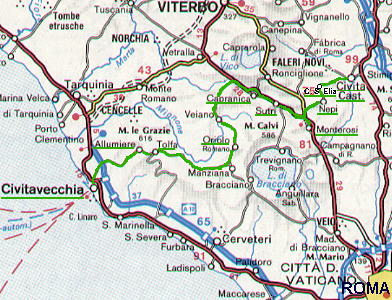 | ||
The red roads you see in the map are the three consular roads built by the Romans to link Rome with its northern provinces: Via Aurelia (near Civitavecchia in the map) reached
Pisa, Genoa and France; Via Cassia (near Viterbo in the map) reached Florence, Bologna and the Alps; Via Flaminia (near Civita Castellana in the map) reached Rimini and the
Adriatic Sea.
Civitavecchia
Civitavecchia means old (vecchia, by the way read "cch" as "k") town (civita, old Italian, nowadays cittą), because it was destroyed in 812
by the Saracens and its inhabitants, who had sought refuge in the towns in the interior, started to repopulate it after several years (so they went back to the old town).
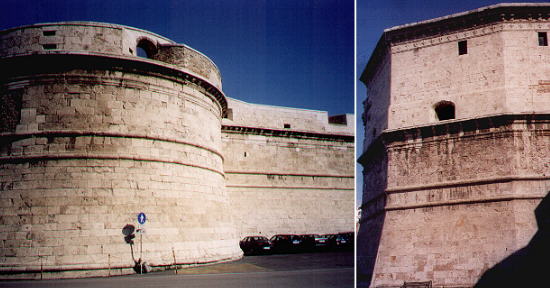 | ||
Its importance grew at the beginning of the XVIth century when Julius II (who, when he was still a cardinal, had strengthened the defences of Ostia) entrusted Michelangelo with the design of a large fortress to protect the harbour of Civitavecchia. The fortress was completed under Paulus III in the 1530s: the proportions, the facing of the walls with travertine, the decoration, the gigantic papal coats of arms give to the fortress a very harmonious look (for other images of the fortress click here).
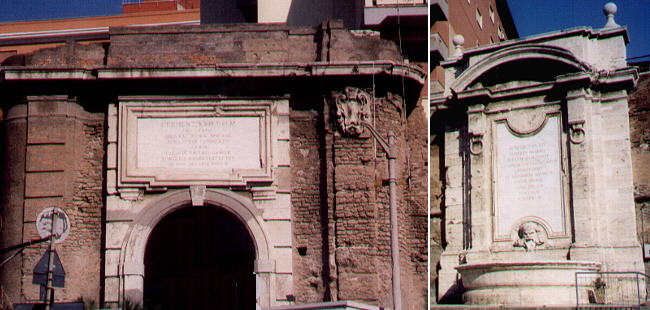 | ||
With the unification of Italy in the XIXth century Civitavecchia became the main port for reaching Sardinia and because of this it was heavily bombed during World War II. This fact together with a hasty post-war reconstruction led to the isolation of a limited number of monuments in an anonymous modern urban context. The gate and the fountain (by Luigi Vanvitelli) shown above were built after 1740 and they are interesting examples of the first signs of the move from Baroque to Neoclassicism.
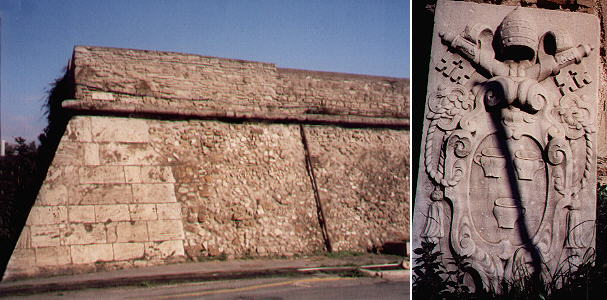 | ||
In addition to the fortress, Civitavecchia was protected by walls, which are largely lost or diminished in their size because of a higher ground level. They had several papal coats of arms: the coat of arms shown above (Innocentius XI 1691-1700) is now in a sort of depot near the walls. In the background of this page you can see a detail of the walls.
Allumiere and Tolfa
Alum, hence Allumiere, is a double sulphate of aluminium and potassium, which is used in paper manufacturing, hide tanning and dyeing. In the past the limited development of chemistry made the mines of natural alum a sort of gold mines. In 1462 alum was discovered near the town of Tolfa and its mining became a very important source of revenue for the State of the Church.
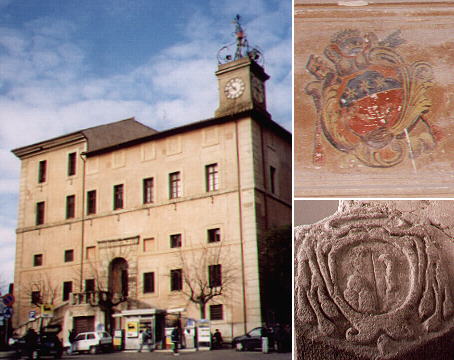 | ||
The town of Allumiere was founded to host the miners and the administrative offices, so the main building is not a town hall, but the palace where the administrative activities took place. Usually the State of the Church did not run directly the mines, but gave them to a third party in return for a fee and this was often a way to favour a friend or a relative of the pope. The image above shows also a coat of arms of Pius VI (1775-79) painted on a cupboard and the coat of arms of a cardinal.
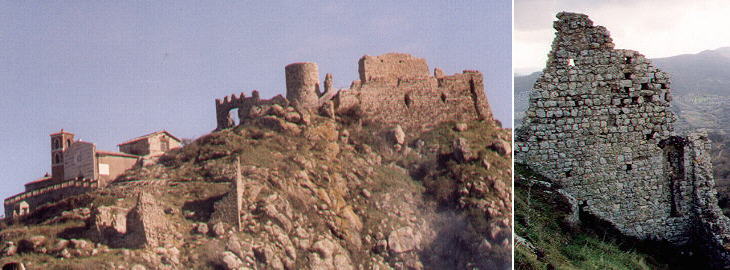 | ||
Tolfa is dominated by the ruins of a medieval fortress which once belonged to the Frangipane. In 1799 French troops set fire to Tolfa and its fortress as the inhabitants, who, because they also viewed the pope as their employer, opposed a strenuous resistance to the invaders.
From Civitavecchia to Civita Castellana - other pages:
Oriolo Romano and Capranica
Sutri and Monterosi
Nepi and Castel Sant'Elia
Civita Castellana
some other walks:
Walks with Ferdinand Gregorovius in the Roman countryside
In and about Viterbo
Around Monte Cimino
From Bracciano to Viterbo
A Pilgrims' Way
On the Edge of the Marsh
In Maremma
Anticoli Corrado where the painters found their models
A walk to Porta Furba
Via Appia Antica from Cecilia Metella to Torre in Selci
Via Appia Antica from Torre in Selci to Frattocchie
A Walk to Ponte di Nona
Branching off Via Cassia: S. Maria di Galeria, Isola Farnese and Formello
A Walk to Malborghetto
See my Home Page on Baroque Rome or my Home Page on Rome in the footsteps of an XVIIIth century traveller
All images © 1999 - 2003 by Roberto Piperno. Write to romapip@quipo.it
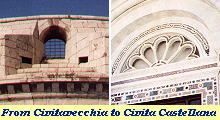 Civitavecchia, Allumiere and Tolfa
Civitavecchia, Allumiere and Tolfa